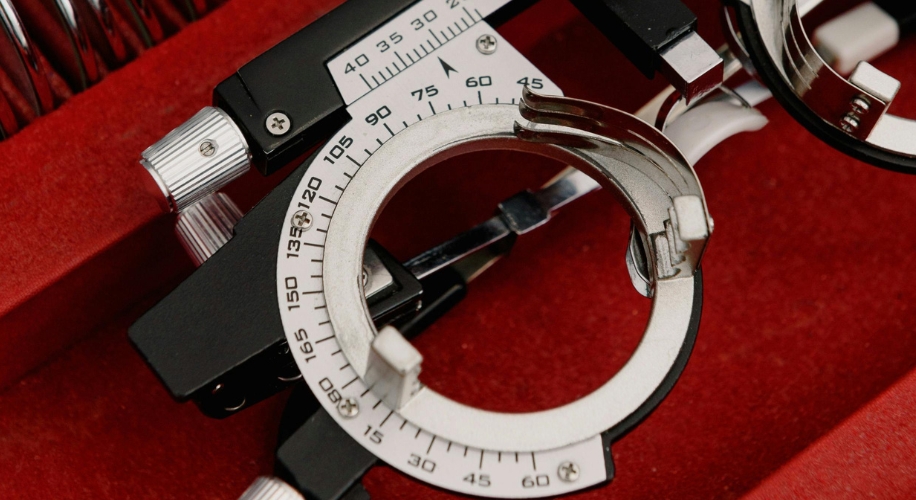Let’s Align on Prism Glasses
Ever wondered how glasses work, particularly those with prism correction? It’s all about bending light, a fascinating science that ensures your world is clear and vibrant. Today, we’ll delve into how prism works in glasses and how it can aid in vision correction.

Why Do We Use Prism?
Prism lenses are commonly used to correct a group of conditions known as binocular vision disorders, which occur when the eyes have trouble working together. This can lead to symptoms like headaches, dizziness, and a lack of depth perception. If you’re experiencing these symptoms, it is important to talk with an eye care professional about your options.
Under normal circumstances, light enters the eye directly and lands on your fovea, which is the central part of your retina. However, in some cases, the light may land on a different part of your retina, causing vision problems such as double vision or eye strain. This is where prism lenses come in.

Photo by Ksenia Chernaya from Pexels
Understanding Prism Lenses
Prism lenses, unlike typical lenses, have a unique, wedge-like shape that enables them to refract, or bend, light. This refraction process is the key to prism correction, a method used to rectify various forms of visual misalignment. By bending the light before it enters the eye, the image alignment happens before it reaches the retina. This process gives the illusion that the object is where it should be and assists the eyes in working together more effectively.
How Does Prism Correction Work?
Prism glasses work by shifting the image slightly up, down, right, or left, helping the eyes to work together and reducing the symptoms of binocular vision dysfunction. The amount of image shift required is measured in prism diopters. The higher the number, the more the image is shifted, and the stronger the prism needed for correction. A general rule of thumb is that 1 degree is equivalent to 1.75 prism diopters, but can vary on different factors such as how far your eyes are from each other.

Finding the Right Prism
Prism can be life changing for certain people who need it, but not everyone needs it. How do you find out if you could benefit from prism?
Binocular Vision Testing
Your optometrist has a suite of tests focused on your binocular vision system that can determine how much eye misalignment you have and how well your eyes can compensate for that misalignment. Your eyes will probably feel exhausted by the end of the testing as your optometrist tests the limits of your system. But fear not, it’s just temporary. Then, based on your results and your symptoms, your optometrist will determine how much prism is indicated for you. They may have you try out a sample in the office to double check that you can adapt well in real life.
How Do I Read My Prism Prescription?
If your doctor has prescribed prism, it will be indicated on your final prescription. The prism section of your prescription is separated into horizontal and vertical directions and can also be combined to compensate for any diagonal deviations.
Choosing Prism Glasses
When you are choosing your glasses for prism, it is important to make sure that there is a good fit and alignment of the frame. Choose frames that fit securely on your face or at least frames that can be adjusted to become secure. Also make sure that your pupillary distance is accurate because misalignments can negate or even worsen the effect of prism, especially with higher prism.
Lastly, you’re probably wondering if prism glasses will look any different from a basic pair of glasses. The answer is no! To the average person, your prism glasses will look like typical clear lenses in your most stylish frames.

Understanding how prism works in glasses is just the beginning. If you suspect that you could benefit from prism correction or any other form of vision correction, please consult your eye care professional. Remember, the world is full of beautiful sights, and you deserve to see them clearly. Find your next pair of prism glasses today!



 Canada
Canada